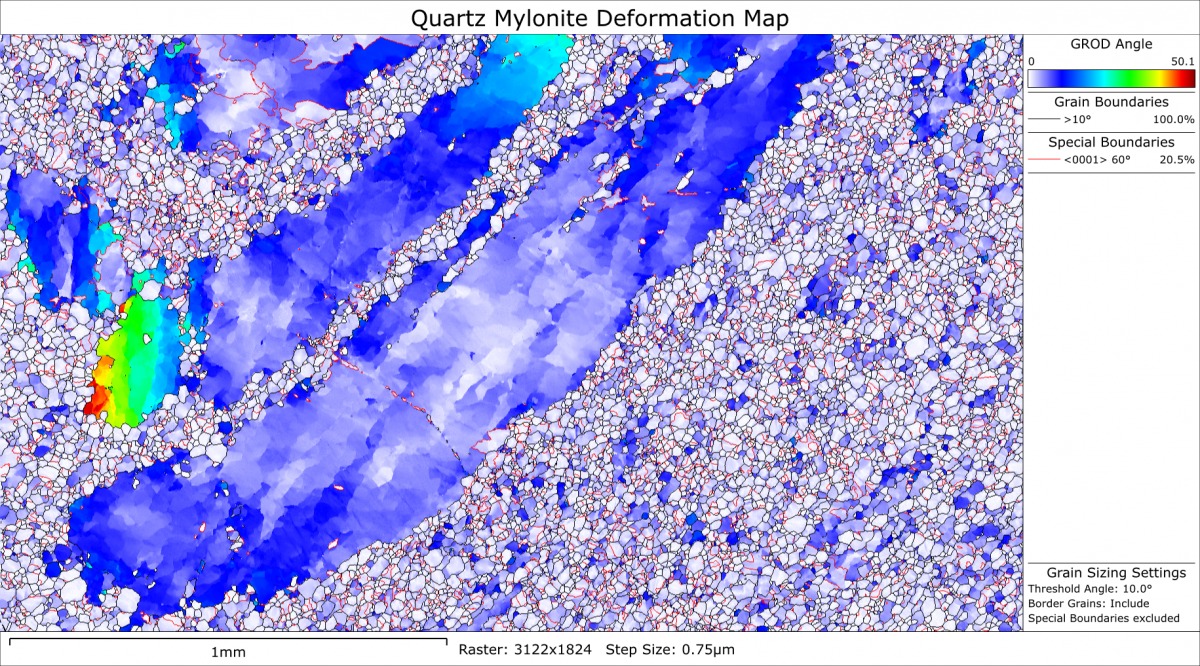Unlocking the secrets of nanoscale structures in fault rocks
The microstructures of rocks created during the process of faulting are typically very difficult to measure due to high defect densities and nanoscale grain sizes. Conventional EBSD in a high resolution SEM can provide some reliable data, but newly developed EBSD pattern matching methods are able to extract significantly more useful information from fault rock samples. In this application note both conventional EBSD and TKD are used, in conjunction with pattern matching, to understand faulting processes in complex earthquake rocks.


